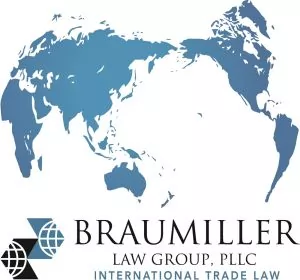The US, Canada, and Finland are launching a joint partnership to build more ice-breaking ships to compete with China and Russia in Arctic. Sad but true, here we go again. Whether it's the South China sea, or even the moon, there will be territorial disputes to challenge ownership where no ownership should actually exist. The pact aims to produce a fleet of ice-breaking ships to display a posture of power in the polar regions and enforce international norms and treaties.
The initiative, somewhat creatively labeled as the Icebreaker Collaboration Effort or ICE pact, was announced during the recent NATO Summit where the alliance called on China to end its support for Moscow's war against Ukraine.
This does beg a couple of questions. Just how big is the arctic region, and how big are these icebreaker ships? Well, the polar ice caps contain a significant amount of ice, and these ships come in various sizes. Here's a breakdown:
The Arctic Sea ice covers an area that ranges between 9 and 12 million square kilometers. The Greenland ice sheet, which is part of the Arctic region, covers about 1.71 million square kilometers and contains approximately 2.6 million cubic kilometers of ice. The Antarctic ice sheet covers about 14.6 million square kilometers and contains between 25 and 30 million cubic kilometers of ice. This ice sheet holds around 70% of the world's fresh water. Climate change, and glacier melting is adding to this annually.
There are several key trade routes within the Arctic region:
Northeast Passage: This route runs along the northern coast of Russia, connecting the Atlantic and Pacific Oceans.
Northwest Passage: This route traverses the northern coastlines of Canada and Alaska, from Baffin Bay near Greenland to the Bering Strait between Alaska and Russia.
Transpolar Sea Route: This route goes directly across the Arctic Ocean, but it is mostly unused due to heavy ice conditions.
Northern Sea Route: This is a national waterway of Russia, spanning seven time zones along Russia's northern coastline.
Arctic Bridge: This route connects the port of Churchill in Canada to the port of Murmansk in Russia.
As of 2024, there are 179 icebreakers in service worldwide, with many of them operating in the Arctic region. These ships are crucial for maintaining navigable routes through the ice-covered waters, supporting scientific research, and ensuring safe passage for commercial vessels. The icebreaker ships come in various sizes, depending on their specific roles and capabilities. Smaller Icebreakers can be around 50-100 meters (164-328 feet) in length and are typically used for lighter ice conditions and shorter missions. Medium Icebreakers are about 128 meters (420 feet) long and have a displacement of around 16,000 tons. Large Icebreakers such as the Russian nuclear-powered vessels, can be up to 173 meters (568 feet) long and displace about 33,500 tons. These ships are designed with reinforced hulls and powerful engines to navigate through thick ice and ensure safe passage for other vessels.
The official press release did not give a timeline for the new icebreakers or say how many vessels the U.S. sought to produce under the pact, but noted the U.S. currently only has two icebreakers, which are nearing retirement. Pathetic. Together, the ICE alliance will identify shipyards in the three countries that can meet demand from partners and allies. Canada and Finland combined have dozens of icebreakers. The official word is that U.S. allies want 70 to 90 icebreakers over the next decade.
The major push comes as China seeks to develop new shipping routes in the Arctic and expand its research in Antarctica. Western governments worry China's army could gain better operational and surveillance capabilities from its polar activities.
As climate change shrinks polar ice packs, Arctic seas are increasingly being used as trade routes connecting the Pacific and Atlantic oceans to major economies. China and Russia are currently taking advantage of those routes that are open for passage of materials under western sanctions.
They have also been working together to develop Arctic shipping routes as Russia seeks to deliver more oil and gas to China.
Russia has more than 40 icebreakers with more in production, and China operates its own smaller but growing fleet. The two countries signed a “no limits” partnership days before Russia's 2022 invasion of Ukraine which is the basis for the cooperation. The race is on, and the ICE pact is far behind. It will be a monumental task to get these ships built in time to compete.
Read more articles by this author: https://www.braumillerlaw.com/author/bob/
Check out our new Digital Magazine Get the inside scoop on the Braumiller Law Group & Braumiller Consulting Group "peeps." Expertise in International Trade Compliance.
The content of this article is intended to provide a general guide to the subject matter. Specialist advice should be sought about your specific circumstances.


